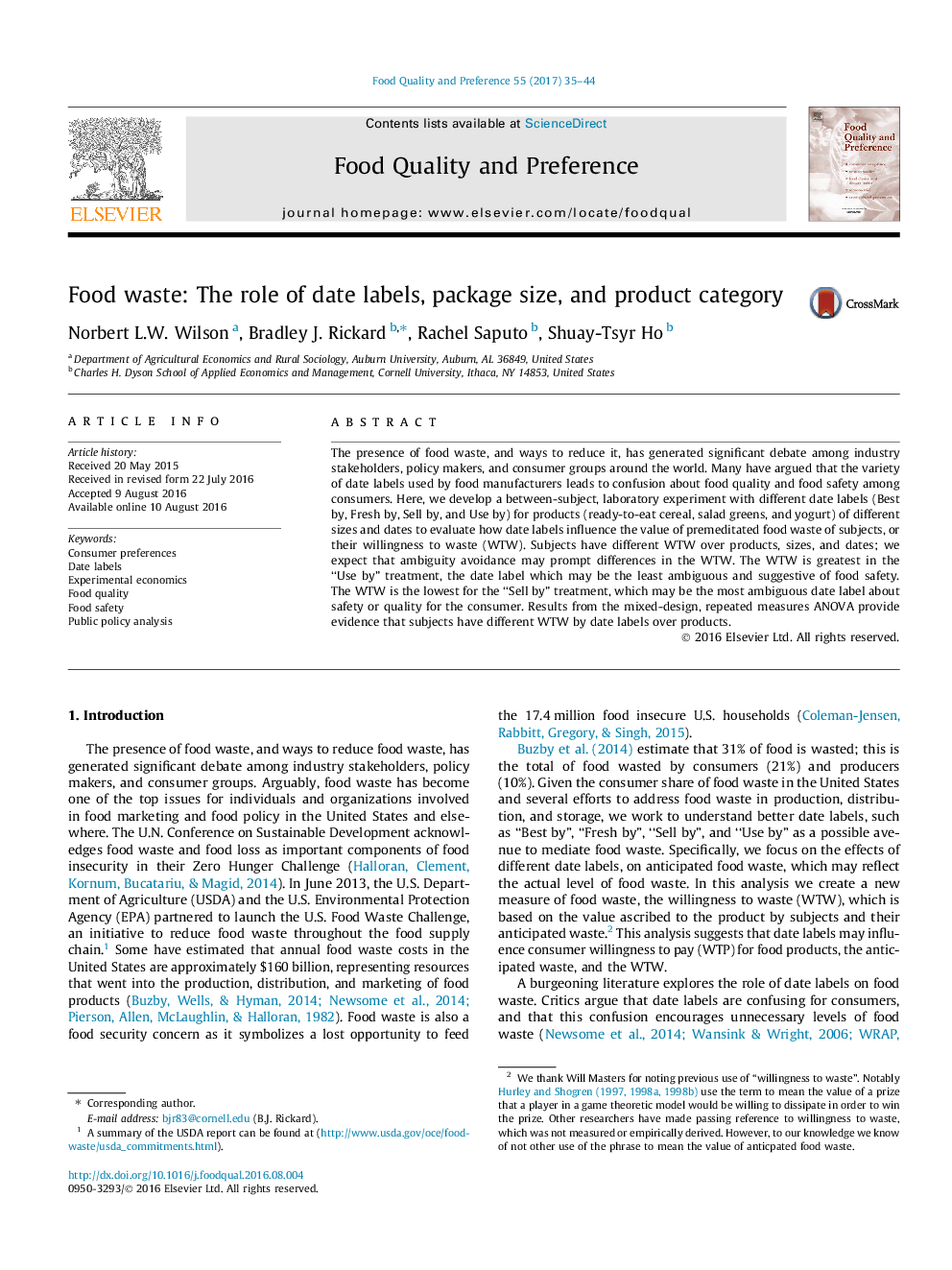| Article ID | Journal | Published Year | Pages | File Type |
|---|---|---|---|---|
| 4316844 | Food Quality and Preference | 2017 | 10 Pages |
•We developed a laboratory experiment to quantify patterns of food waste.•Among the labels studied, “Use by” generates the greatest value of predicted waste.•Subjects indicate differential value of waste depending on product and date label.•Value of predicted food waste increases with package size regardless of date label.
The presence of food waste, and ways to reduce it, has generated significant debate among industry stakeholders, policy makers, and consumer groups around the world. Many have argued that the variety of date labels used by food manufacturers leads to confusion about food quality and food safety among consumers. Here, we develop a between-subject, laboratory experiment with different date labels (Best by, Fresh by, Sell by, and Use by) for products (ready-to-eat cereal, salad greens, and yogurt) of different sizes and dates to evaluate how date labels influence the value of premeditated food waste of subjects, or their willingness to waste (WTW). Subjects have different WTW over products, sizes, and dates; we expect that ambiguity avoidance may prompt differences in the WTW. The WTW is greatest in the “Use by” treatment, the date label which may be the least ambiguous and suggestive of food safety. The WTW is the lowest for the “Sell by” treatment, which may be the most ambiguous date label about safety or quality for the consumer. Results from the mixed-design, repeated measures ANOVA provide evidence that subjects have different WTW by date labels over products.
